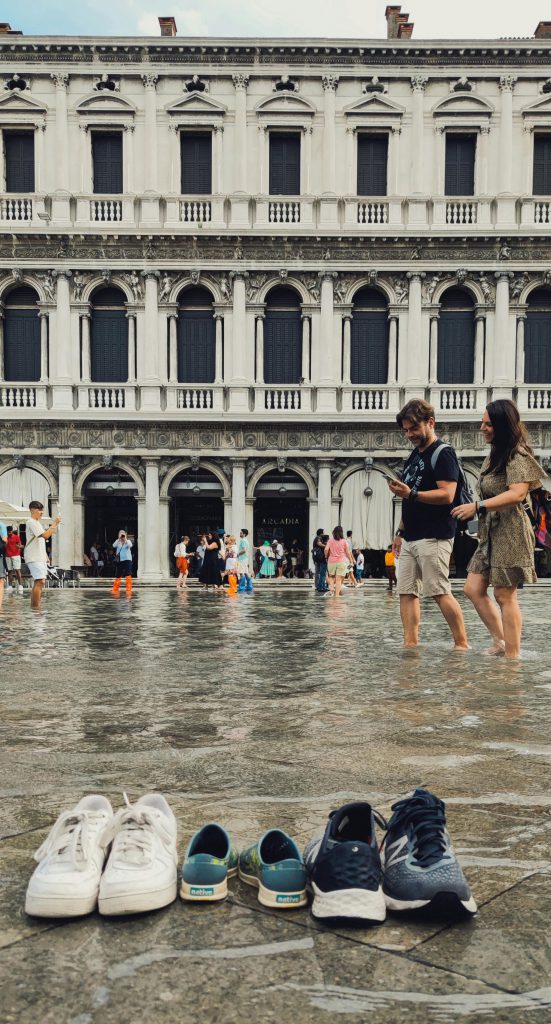List of World Heritage in Danger is broadening thanks to human-created Climate Change
Venice is known for its maze-like canals, Renaissance buildings and gondola rides. But what makes this picturesque city so famous is under threat due to human-caused Climate Change. World leaders associated with UNESCO, a branch of the United Nations that helps to protect heritage sites around the world, met in September 2023 in Riyadh, Saudi Arabia to discuss whether to add the Italian city to a list of endangered world heritage sites. A UNESCO report says that along with over-tourism and construction, climate change-induced sea level rise and extreme weather have put Venice’s storied old buildings and landscapes at risk [1].
In November 2019, floods endangered historical treasures and buildings. Earlier this year, the city suffered from an opposite problem when severe drought made it impossible for the gondolas to pass through some of the city’s canals. Italian authorities have taken some steps to protect Venice’s treasures, such as installing temporary barriers to protect the Saint Mark’s Basilica and nearby buildings from sea level rise. But UNESCO says Italian authorities haven’t done enough to address these issues [1].
In the last decades, we have experienced extreme weather events such as abnormal fires and super impactful floods. Cataclysmic weather occurs with greater intensity and frequency from warmer temperatures brought on by the burning of fossil fuels. So, when climate change-related disasters happen, it’s not just physical places that are lost, but also people’s connection to those places [1].
The combined effects of human-induced and natural changes, due to sea level rise, extreme weather events and other Climate Change induced phenomena, are causing deterioration and damage to build structures and urban areas and threaten the integrity of the cultural, environmental and landscape attributes and values of many cultural properties. Many of these issues, which individually represent threats to the Outstanding Universal Value (the basis for any nomination to the UNESCO World Heritage Sites list) of the cultural properties, but which also have a cumulative adverse impact, remain unresolved or only temporarily addressed [1].
Restoring healthy waterways and forests helps to manage the impacts of climate change. Yet fires and floods keep coming, whether the land is protected or not. And cultural heritage in all its forms is perpetually at risk. Communities living near these places face tough decisions about what parts of their cultural heritage to hold on to and how to get prepare for future climate change-related events. In any case, authorities need to engage residents in the decision-making process to learn what cultural heritage is most valued [1].
The List of World Heritage in Danger of UNESCO
Several cultural heritage properties have been subject to problems caused by their environment over the last decade, including for example, the Royal Palaces of Abomey (Benin, Africa), which was damaged by a tornado and was on the In-Danger List of UNESCO from 1985 to 2007, and Timbuktu (Mali, Africa), which faced the threat of sand encroachment, and was on the In-Danger List from 1990 to 2005. There are other types of problems related to changes in the environment. For example, the Wieliczka Salt Mines (Poland, Europe) were affected by water infiltration, which threatened to damage the salt statues that had been carved by the miners over centuries. With the assistance of the World Heritage Fund, it was possible to find corrective measures and mitigate the risk. The site was on the In-Danger List from 1989 to 1998 (ICOMOS World Heritage in Danger, Compendium II, 2009).
The List of World Heritage in Danger UNESCO is designed to inform the international community of conditions which threaten the very characteristics for which a property was inscribed on the World Heritage List and to encourage corrective action. The list includes only such property forming part of the cultural and natural heritage as is threatened by serious and specific dangers, such as the threat of disappearance caused by accelerated deterioration, large-scale public or private projects or rapid urban or tourist development projects, destruction caused by changes in the use or ownership of the land, major alterations due to unknown causes, abandonment for any reason whatsoever, the outbreak or the threat of an armed conflict, calamities and cataclysms, serious fires, earthquakes, landslides, volcanic eruptions, changes in water level, floods and tidal waves [2].
The 56 properties (September 2023) that the World Heritage Committee has decided to include on the List of World Heritage in danger following Article 11 (4) of the Convention [3].
Nowadays, Climate Change has become the fastest-growing threat to World Heritage. The impacts of Climate Change are everywhere, and advisory bodies and organizations estimate that one in four sites on the World Heritage List is already being impacted. It is also crucial that a Climate Vulnerability Index (CVI) for World Heritage properties has been proposed. If adopted by the World Heritage Committee, it has the potential to influence responses to Climate Change at the World’s most important natural and cultural heritage sites [4].
Venice may be put on the endangered list.
[2] https://whc.unesco.org/en/conventiontext/#Article11.4
[3] https://whc.unesco.org/en/danger/
[4] https://blog.ucsusa.org/adam-markham/climate-change-is-the-fastest-growing-threat-to-world-heritage/



